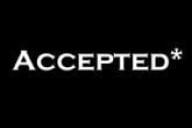You have /5 articles left.
Sign up for a free account or log in.
The University of Washington is set to begin a new admissions process that will have readers poring over every single application in detail.
In the past, the university has used the “admissions index” provided by the Washington Higher Education Coordinating Board to determine about half of all acceptances. The index is simply a grid that assigns each applicant a point value, based on standardized test scores and high school grade-point average. Washington automatically accepted students with a rating of 70, which corresponds to, for example, a 1020 SAT, and a 3.9 average; or a 1290 SAT and a 3.64 average.
If a student did not make the admissions index grid grade, admissions officials would review the application using another grid that scored students based on various academic and personal categories. Now, every one of about 16,000 applications will get the full treatment, minus a rigid scoring system, as part of Washington’s “holistic” admissions process. Admissions staff members will look at all materials submitted to try to get a complete picture of each applicant, still including test scores and grades, but paying attention to things like personal challenges that an applicant has faced, and displays of leadership beyond the classroom. Basically, any and all relevant experiences will be on the table for application readers to consider.
Other public institutions across the country have made similar moves, including the University of California, the University of Kentucky, and the University of Michigan. The moves at Kentucky and Michigan were, at least in part, the result of the ruling by the U.S. Supreme Court in a case in 2003 involving the University of Michigan that an institution can consider race or ethnicity as one factor in admissions, but not as rigidly scored qualities.
In Washington State, consideration of race, ethnicity and gender in public college admissions was banned in 1998 after voters passed Initiative 200. After passage of the initiative, the percentage of black, Hispanic, and American Indian students in the freshman class dropped from 9 percent in 1998, to 6 percent in 2000, apparently because fewer minority students applied. That number has since rebounded to 9 percent.
Critics of the holistic approach, which will look at socioeconomic background in an attempt to paint a picture of what an applicant’s life has been like, say that the change is a veiled attempt to institute racial preferences.
According to Phillip Ballinger, director of admissions at Washington, however, the new system will not explicitly consider race, “which is against the law,” he said, and is simply a better system that is commonplace at the nation’s most selective private institutions. He said that high school counselors support the new approach, because many students have previously taken easy schedules to protect their grades and qualify for automatic admission. “Students are smart. Why take that fourth year calculus when you can take intro to breathing and save your G.P.A.,” Ballinger said. He added that some students simply didn’t apply because they felt their index score was too low.
Jim Sulton, executive director of the Higher Education Coordinating Board, applauded the switch, and said it will bring in a “more capable” class, and one with “more diversity of experience.” He noted that Washington State University has also ditched the board’s index in favor of its own index, which includes the difficulty of high school courses. Washington State is also considering using a comprehensive approach like Washington’s. “My hope is that the index is gone [from all public institutions] early next year,” Sulton said.
Naturally, the holistic admissions process will be quite a bit more labor intensive than the grid system. The university plans to spend $250,000 to bring in four admissions office staff members, and to hire 20 graduate students as application readers.
Ballinger said that the new process will ensure that Washington really gets the best students by looking at the difficulty of the courses a student has taken as well as the challenges he or she has faced in life. “Let’s say our job is to pick the best swimmers,” he said. “Some are in a still lake, some with the current in a stream, and some against a choppy ocean. Students aren’t all in the same pool. There are things that are important to look at, that are not simply quantitative.”








